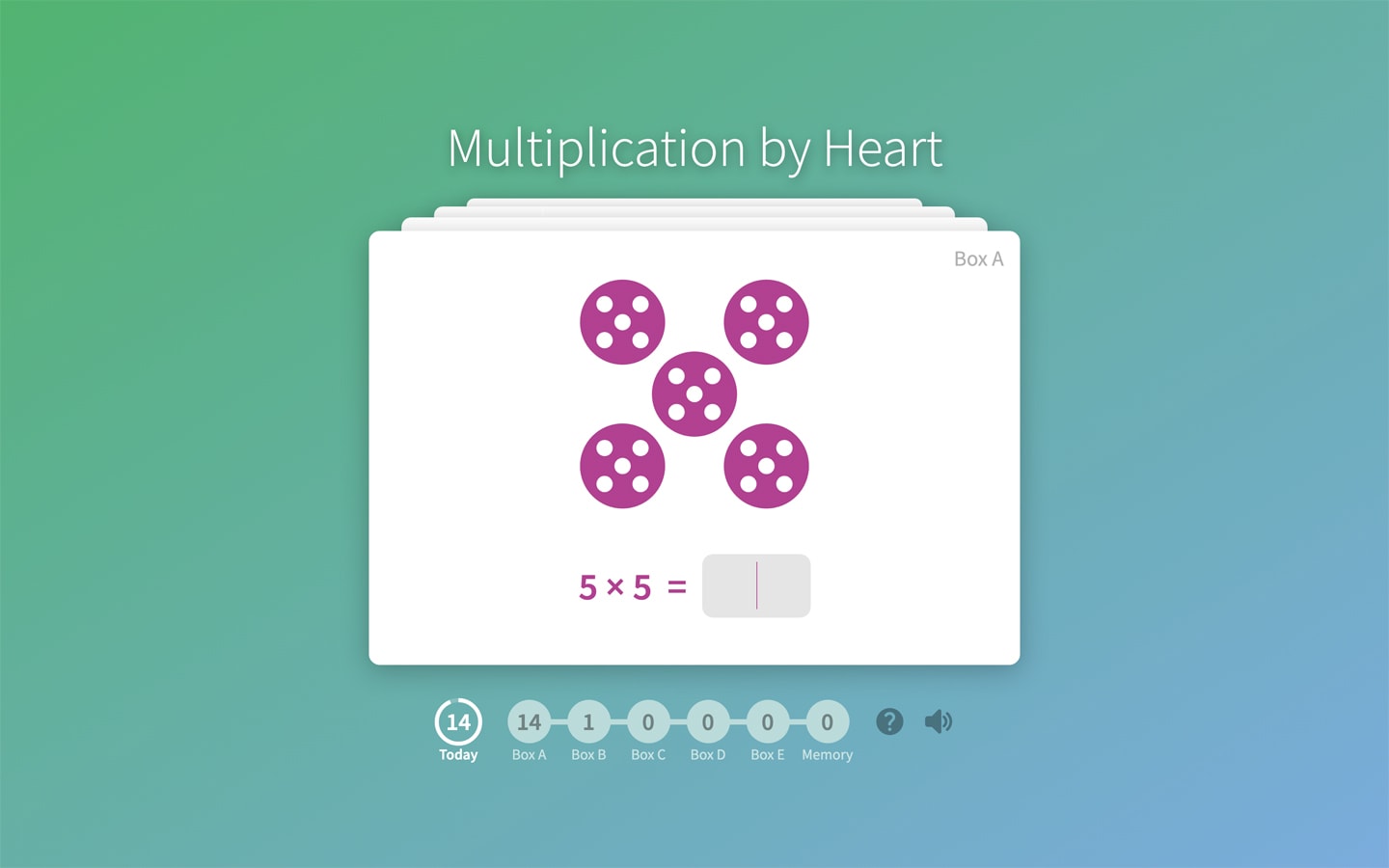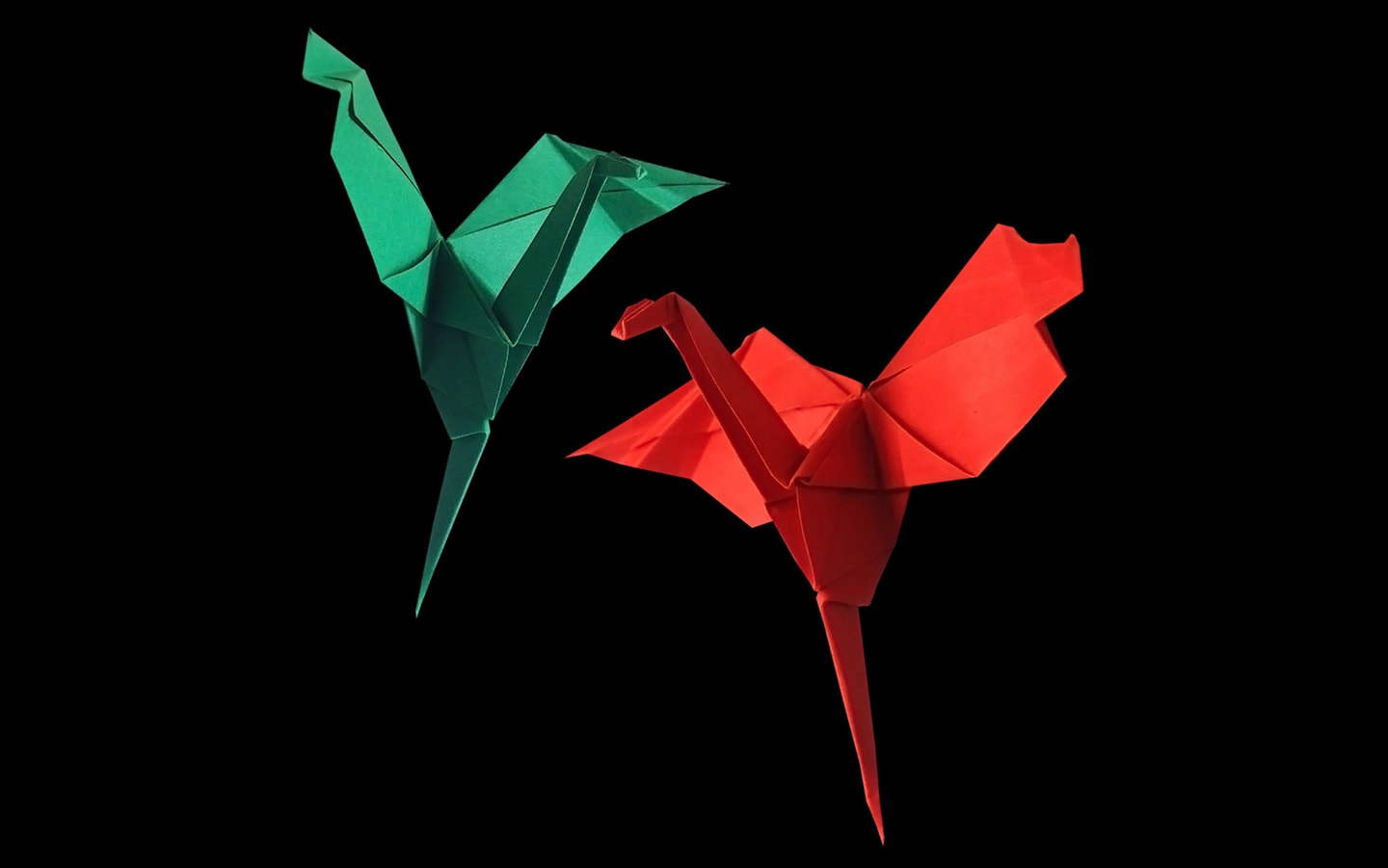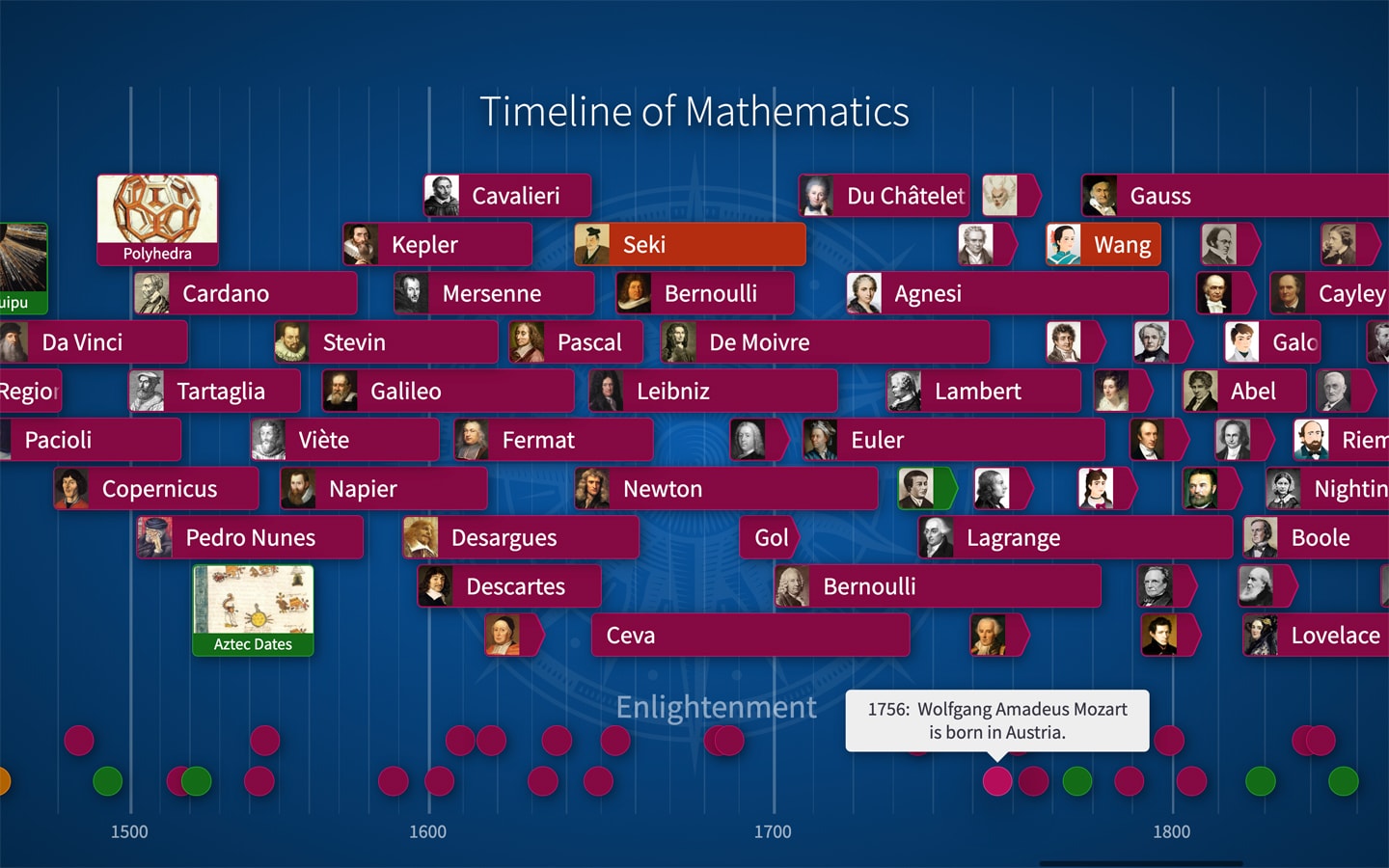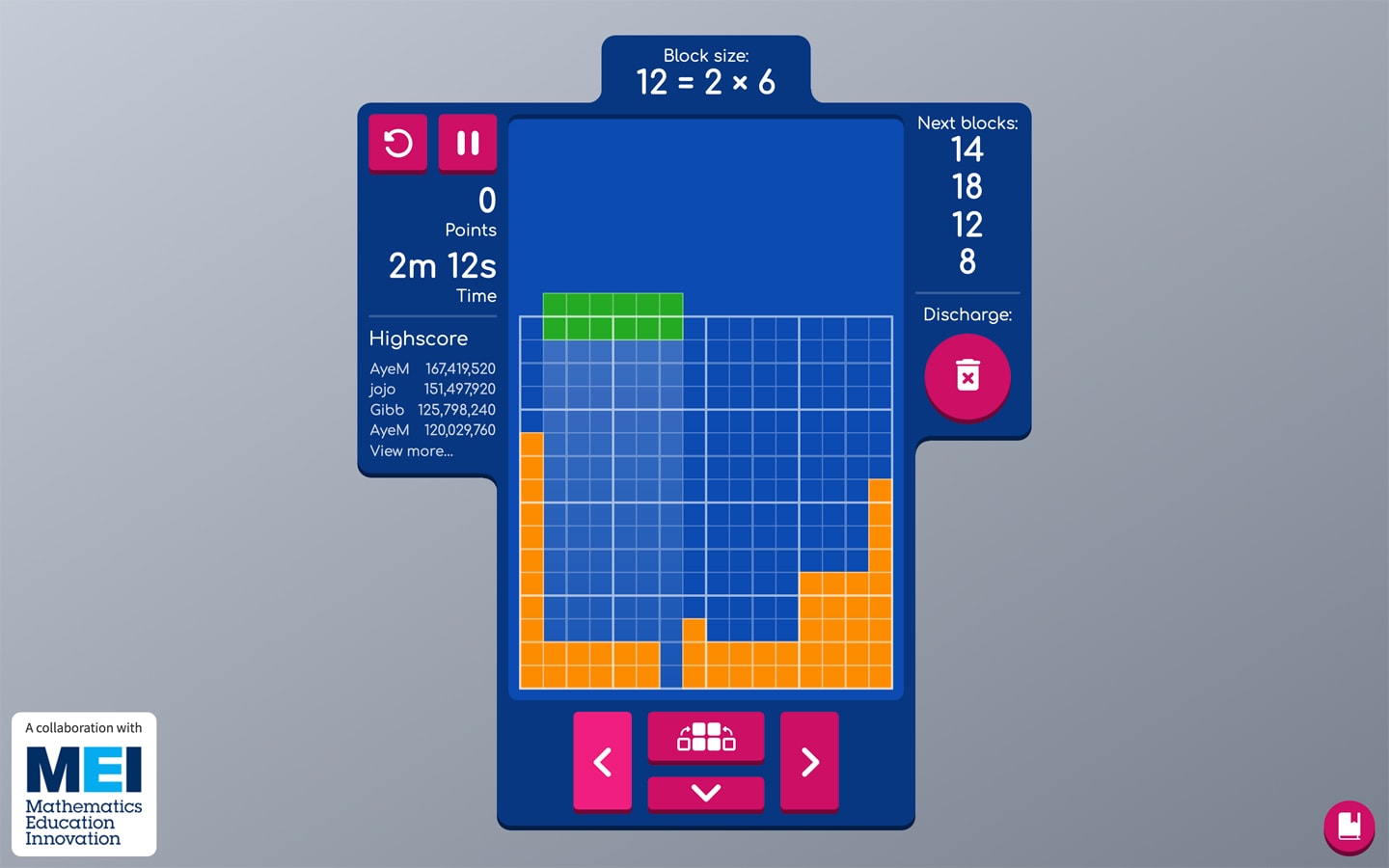Free activities for Grades K–8
Math games and manipulatives for online
and remote learning
—
Whether you’re teaching in a 100% remote or hybrid environment—or looking for resources to supplement your regular lesson plan—Mathigon can help you bring math to life for your students.
What is Polypad?
—
Polypad is an open canvas for using the world’s best virtual manipulatives for exploring, creating, and discovering mathematics. Teachers can easily set up canvasses for students and review how they use the dynamic (and dare we say fun) manipulatives.
Many of our favorite activities were created in Polypad. Check out the quick video to learn more.
Ready-to-use activities
—
All of the activities below are ready for you to use with students. Visit the teacher tutorial page to learn about creating Mathigon classes, adding students to your classes, connecting your LMS to Mathigon, and more.
How are you using Mathigon to keep students engaged?
Give us your feedback. The first 100 respondents will receive a free Timeline of Mathematics poster!

Multiplication by Heart
Multiplication by Heart is a set of interactive multiplication questions that track students’ progress and enable them to visualize multiplication problems. Watch the tutorial video and read the FAQs to learn more about Multiplication by Heart.
Activities:
- Assign 5 minutes of practice/day.
- Fill in extra class time with play.
- Supplement your lesson with independent practice time.

Origami
Origami is a fun and hands-on way to integrate art in math class while integrating content and skills from geometry.
Activities:
- Share the link with parents to have the whole family get involved.
- Have students build Origami dragons during class time.
- Invite an art teacher to discuss color theory and design.

Timeline of Mathematics
Did you know the first known evidence of math comes from 20,000 BCE? Or that trigonometry was discovered among the stars?
Mathematics is a field of discovery, wonder, and exploration, and the Timeline of Mathematics can bring that to life for students.
Activities:
- Assign students to a specific era and have them put together a report to share with the class.
- Have students participate in this scavenger hunt.
- Integrate interdisciplinary learning with history into your different math lesson plans.

Factris
Tetris is fun, but what’s more fun? A version of Tetris that integrates geometry, factors of numbers, and problem-solving skills. Sounds too good to be true? Well, that’s exactly what Factris is.
Activities:
- Fill in extra class time with gameplay.
- Celebrate the completion of your geometry or multiplication unit.
- Host a class competition to find the highest scorer.
Tangram builder
There are countless different shapes that can be created using the seven Tangram tiles. What can you and your students come up with?
Activities:
- Celebrate student creativity with a Tangram contest in class.
- Have students use Tangrams to represent themselves.
- Integrate STEM by having students write an algorithm to build a Tangram that a partner has to follow.
- Have students create their own Tangram puzzle for their classmates to solve.
Pattern blocks
Use Mathigon’s pattern blocks to create engaging lessons that help students identify geometric shapes, colors, and more.
Activities:
- Check out this pre-made Polypad canvas with just pattern blocks.
- Use pattern blocks to explore the four operations with fractions.
- Explore equivalent fractions with pattern blocks.
How to access them:
- Navigate to Polypad.
- On the left-hand menu, click Geometry.
- Click Polygons.
Pentominoes
Pentominoies are shapes made by joining five squares together. There are 12 of them in total, and they can be used for various geometry and interdisciplinary art activities in math.
Activities:
- Use all 12 pentominoes to create a variety of animals in the Pentomino Zoo.
- Use pentominoes to explore the relationship between area and perimeter.
How to access them:
- Navigate to Polypad.
- On the left-hand menu, click Geometry.
- Click Polyominoes.
Tetrominoes
Tetrominoes are shapes made by joining four squares together. Tetrominoes can be used for various geometry, algebra, and interdisciplinary art activities in math.
Activities:
- Use tetrominoes to explore equivalent algebraic expressions.
- Use tetrominoes to explore dilations and scale factors while building reptiles.
How to access them:
- Navigate to Polypad.
- On the left-hand menu, click Geometry.
- Click Polyominoes.
Protractor, ruler, and compass
These tools need no introduction. You know them, and now you and your students can use them online.
Activities:
- Explore angles formed by the minute and hour hand on a clock.
- Explore when the hands of a clock overlap to form a straight line.
- Construct geometric shapes, including basic and regular polygons.
How to access them:
- Navigate to Polypad.
- On the left-hand menu, click Geometry.
- Click Utensils.
Rekenrek
The Rekenrek is a math tool created by Adrian Treffers. It means “counting rack” and encourages students to develop their number sense.
Activities:
- Show a number on the Rekenrek and ask how many it is and how they know.
- Ask students to show a number on the Rekenrek.
- Model story problems, like “I have three flowers, but I pick four more”.
How to access them:
- Navigate to Polypad.
- On the left-hand menu, click Numbers.
- Click Additional Tools.
Base ten blocks
Base ten blocks are groupings of blocks representing 1, 10, and 100. They offer a spatial model of the base ten number system.
Activities:
- Explore factors of numbers.
- Learn about divisibility rules.
- Try some remainder riddles.
How to access them:
- Navigate to Polypad.
- On the left-hand menu, click Numbers.
- Click Number Tiles.
Multiplication grid
The multiplication grid cover multiplication from 1s to 12s. Students use the grid to see patterns and compare operations across this range.
Activities:
- Use the multiplication grid to explore decimal multiplication.
How to access them:
- Navigate to Polypad.
- On the left-hand menu, click Numbers.
- Click Number Grids.
Fraction bars
Fraction strips are a visual representation of fractions that help students understand, compare, and work with fractions.
Activities:
- Blend colors on fraction bars to explore ratios.
- Explore Egyptian Fractions.
- Use fraction manipulatives to explore fraction addition and division.
- Play the Fractions 1234 game.
How to access them:
- Navigate to Polypad.
- On the left-hand menu, click Fractions.
- Click Fraction Bars.
Number bars
Number bars are different colored rectangles representing different numbers in math. They can help students understand basic operations, like addition and subtraction.
Activities:
How to access them:
- Navigate to Polypad.
- On the left-hand menu, click Numbers.
- Click Number Bars.
Prime factor circles
Prime factor circles visualize the process of breaking down numbers into prime numbers. They use different colors to represent divisibility. Integrating these in your lessons gives students a hands-on activity to engage with prime factorization.
Activities:
- Explore factors of numbers.
- Find common factors.
How to access them:
- Navigate to Polypad.
- On the left-hand menu, click Numbers.
- Click Prime Factor Circles.
Algebra tiles
Algebra tiles are different shaped square and rectangular tiles used to represent numbers and variables. That way students can visualize basic algebra equations.
Activities:
- Explore factoring quadratics.
- Complete the square.
How to access them:
- Navigate to Polypad.
- On the left-hand menu, click Algebra.
- Click Algebra Tiles.
Balance scale
Will it balance? Practice probability, algebra, and basic operations using the balance scale with your class.
Activities:
- Explore a range of sample balance scale Polypads.
- Invite students to build their own balance scale puzzles.
How to access them:
- Navigate to Polypad.
- On the left-hand menu, click Algebra.
- Click Algebra Balance Scale.
Coordinate axes
Let’s get plotting! Plotting graphs, that is. Mathigon has a variety of graphing tools like coordinate axes, data tables, charts, and more so you can address data-related topics with students.
Activities:
- Read the tutorial to learn about graphing, tables, and sliders.
How to access them:
- Navigate to Polypad.
- On the left-hand menu, click Algebra.
- Click Coordinate Axes.
Coins, dice, and spinners
Your favorite probability tools are now online. Use coins, dice, and spinners to introduce students to probability content and skills.
Activities:
- Explore the probability of flipping HHH or TTT when flipping 3 coins.
- Calculate the probability of a variety of events with coins and dice.
- Investigate when to multiply probabilities.
- Have fun with a Galton Board.
How to access them:
- Navigate to Polypad.
- On the left-hand menu, click Probability and Data.
- Click Coins, Dice, and Spinners.
Chess
Your students can teach themselves how to play with the Polypad chessboard—well, technically, Mathigon teaches them how to play. They’ll learn strategies and the rules of the game and compete with each other.
Activities:
- Have students learn chess while at home (learn how to use the chessboard).
- Host a virtual chess club.
How to access them:
- Navigate to Polypad.
- On the left-hand menu, click Games and Applications.
- Click Chess.
Dominoes
Dominoes are not just a fun activity over the game table. They also have real mathematical value. Explore how you can use these virtual dominoes as mathematical manipulatives.
Activities:
- Explore the domino frame puzzles.
How to access them:
- Navigate to Polypad.
- On the left-hand menu, click Games and Applications.
- Click Dominoes.
Clocks
Whether you’re teaching students how to tell time or measure the angles of the hour and minute hand, clocks integrate easily into your math class with these activities.
Activities:
- Explore angles formed by the minute and hour hand on a clock.
- Explore when the hands of a clock overlap to form a straight line.
How to access them:
- Navigate to Polypad.
- On the left-hand menu, click Games and Applications.
- Click Clocks.